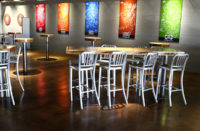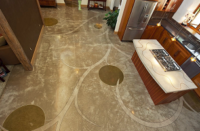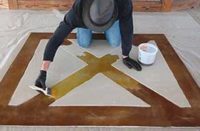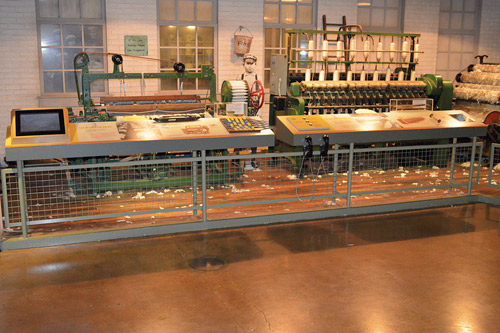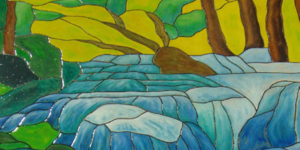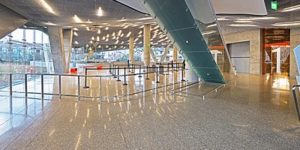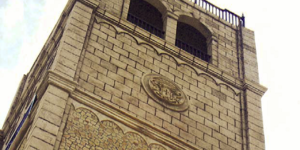Putting down a beautiful concrete museum floor that doesn’t distract from the artwork is, well, creating a work of art in its own right. Jeroen Kaijser Bots, owner of Huntersville, N.C.-based Eurofloors, was able to do so at the Levine Museum of the New South with not just one style of flooring, but three.
The Levine Museum of the New South approached Kaijser Bots because of his reputation for creating stunning, high-end projects. The museum was looking to revamp their old floor. Over its 80-year lifetime, it had endured a number of stains, layers of glue, and vinyl tile. Overall, Kaijser Bots says, “It was a mess.”
In the museum’s 2,000 square-foot entryway, the Museum director and project architect were looking to replicate the look of dried mud. Kaijser Bots applied an overlayment from SureCrete, giving it a rough hand trowel to create the look the client was going for. “It’s quite hard to make a floor look like mud when you actually want it to look like mud,” Kaijser Bots joked. He then colored it accordingly using EcoStain from SureCrete, and sealed with a high-build epoxy.
Next, Kaijser Bots was asked to create a floor that would look reminiscent of the 19th century, as all the artifacts in that room are from that era. Because of the floor’s poor condition, Kaijser Bots first shotblasted, then ground the concrete. After the grinding, a custom color of reactive stain was applied, followed by a dye.
“I like staining because it gives so much more depth than when you use just a dye,” Kaijser Bots says.
The area was then sealed with a high-build, 100 percent solids epoxy from American Industrial.
The third floor he transformed was designed to look like the streets of Charlotte. The museum wanted to use a product that looked like asphalt, and Kaijser Bots went with a vinyl chip system, using a base from American Industrial and a custom blend of chips from Torginol. He chose a polyaspartic sealer for durability and applied a top layer of Dura-Kote by SureCrete to give a satin finish.
As if having to create three distinct yet harmonious floors wasn’t enough of a challenge, the museum remained open during the entire process. That meant odors were a big concern. The artifacts also remained in the building, so keeping dust at a minimum was crucial. Finally, because sections of the museum had to be closed to allow the work to be finished, time was of the essence.
“We worked on it day and night to make sure we had a quick enough turnaround,” Kaijser Bots says.
